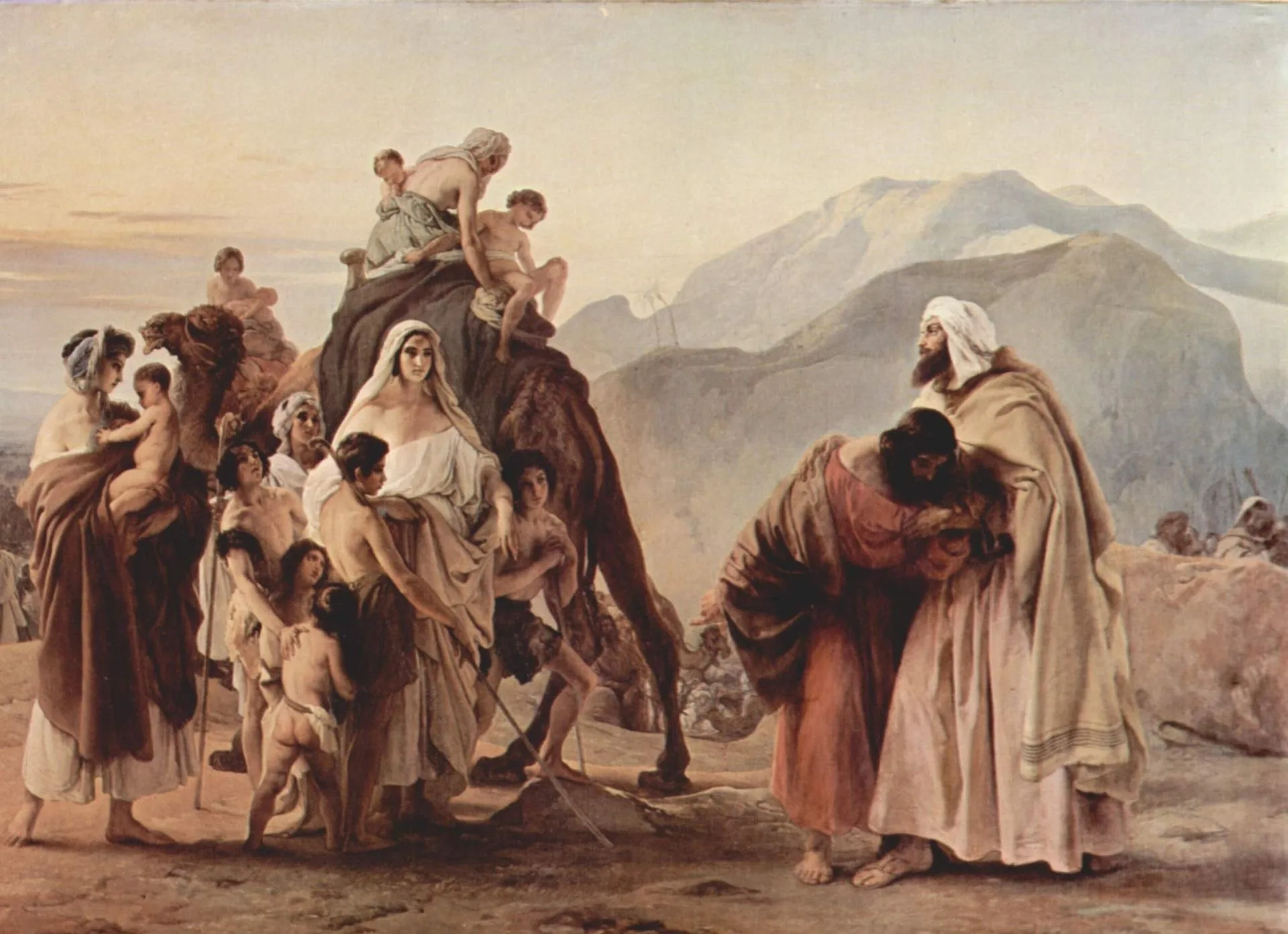Jacob, one of the most prominent figures in the Bible, plays a significant role in the narrative of the Old Testament. His story, marked by family conflict, divine encounters, and eventual reconciliation, offers deep insights into the themes of faith, identity, and the covenant between God and His chosen people.
Who is Jacob in the Bible?
Jacob is a key patriarch in the Bible, specifically in the book of Genesis. He is the son of Isaac and Rebekah and the grandson of Abraham, the father of the Israelite nation. Jacob's life is a complex tapestry of struggles and triumphs, making him a central figure in the lineage that would lead to the twelve tribes of Israel.
Who was Jacob in the Bible?
Jacob was born as the younger twin brother to Esau. Even in the womb, the two brothers were at odds, a conflict that would define much of Jacob's early life. Jacob's name, which means "heel-grabber" or "supplanter," foreshadows his role in supplanting Esau as the primary heir of God's promises to Abraham. His life story, filled with moments of deception and transformation, is pivotal to understanding the development of the Israelite identity.
Jacob Bible Story
The story of Jacob in the Bible begins with his birth, where he emerges gripping Esau's heel, symbolizing the struggle that would continue between them. As they grew, Esau, a hunter, became his father Isaac's favorite, while Jacob, who preferred to stay close to home, was favored by Rebekah.
One of the most famous incidents in Jacob's life is when he deceived his father Isaac to receive the blessing meant for Esau. With the help of his mother Rebekah, Jacob disguised himself as Esau, tricking his blind father into giving him the blessing of the firstborn, which included the inheritance of God’s covenant. This act of deception set off a chain of events that would lead Jacob on a long journey of self-discovery and transformation.
Fleeing from his brother's wrath, Jacob traveled to his uncle Laban's home in Haran. On his way, he had a profound spiritual experience at Bethel, where he dreamt of a ladder reaching to heaven with angels ascending and descending. In this dream, God reiterated the covenant made with Abraham, promising Jacob that his descendants would be as numerous as the dust of the earth and that all nations would be blessed through them. This encounter marked a turning point in Jacob's spiritual journey, deepening his relationship with God.
Jacob’s time with Laban was marked by both success and struggle. He fell in love with Laban's daughter Rachel, but was tricked into marrying her older sister Leah first. After working for Laban for many years, Jacob eventually married Rachel and had children with both Leah, Rachel, and their maidservants, Bilhah and Zilpah. These twelve sons would go on to become the patriarchs of the twelve tribes of Israel.
What did Jacob do in the Bible?
Jacob’s actions in the Bible are complex and often controversial. He is known for his cunning and resourcefulness, traits that both helped and hindered him throughout his life. From deceiving his father and brother to outmaneuvering Laban in accumulating wealth, Jacob’s life was a mix of sharp intellect and divine intervention.
One of the most significant events in Jacob’s life was his wrestling with an angel, a mysterious encounter that took place as he prepared to reunite with Esau. This struggle, which lasted all night, left Jacob with a permanent limp and a new name, Israel, meaning "he who struggles with God." This name change was symbolic of Jacob’s spiritual evolution, from a man who relied on his own wits to one who fully depended on God.
In his later years, Jacob reconciled with Esau, a powerful moment of forgiveness and healing in the Bible. He then settled in Canaan, where his family grew and prospered. However, his life was not without further trials, particularly in the story of his son Joseph, who was sold into slavery by his brothers but later rose to power in Egypt. Jacob’s reunion with Joseph, whom he had believed to be dead, is one of the most poignant moments in the Bible.
The Story of Jacob in the Bible
Jacob’s story is a profound narrative of transformation. It illustrates the themes of God's faithfulness, the importance of humility, and the power of reconciliation. Despite his flaws, Jacob was chosen by God to be a patriarch of His people, and his life reflects the journey of faith that many believers experience. From a life marked by deception and conflict, Jacob emerged as a man who fully relied on God's promises, ultimately becoming the father of a great nation.
Jacob in the Bible
In the broader biblical narrative, Jacob’s life is a critical link between the founding patriarchs—Abraham and Isaac—and the emergence of the nation of Israel. His twelve sons, through their own stories, would shape the future of the Israelite people. Jacob’s experiences, from his struggles with his brother to his wrestling with God, offer deep lessons about the human condition and God’s unwavering commitment to His covenant.
In conclusion, Jacob's story is one of redemption, transformation, and the fulfillment of God's promises. His journey from a man of cunning to a man of faith mirrors the spiritual journey of many believers. Jacob’s legacy, as the father of the twelve tribes of Israel, continues to be a foundational element in the history and faith of the Jewish and Christian traditions.
